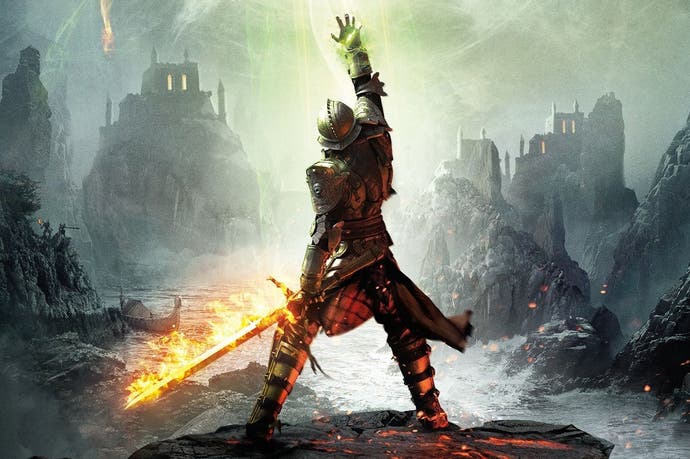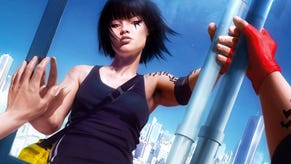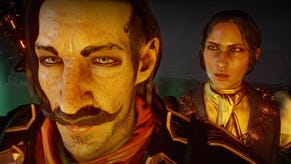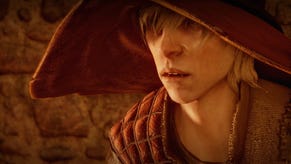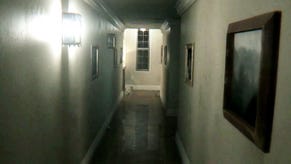Face-Off: Dragon Age: Inquisition
BioWare's Frostbite debut impresses on all platforms.
For all their accomplishments, it's fair to say that previous episodes in the Dragon Age saga lacked something when it came to visual polish and technical acumen - but Inquisition is something different and something really special. BioWare utilises DICE's Frostbite 3 technology not just to produce a beautiful, well-optimised experience, but also to open up the gameplay.
While previous instalments in the series were limited to small areas divided by loading points, Inquisition now presents maps much larger in scale and detail. This new world is massive and ripe for exploration, complete with beautiful, detailed visuals - and as an added bonus, performance is much improved over previous BioWare console efforts. We've been spending some time with the Xbox One, PlayStation 4, and PC versions of the game and each one offers an excellent experience worth jumping into - but there are some fascinating differences between each offering.
In an attempt to squash launch controversy developers have been increasingly open about rendering resolutions and BioWare is no exception. As the developer revealed, Dragon Age runs at 900p on Xbox One and 1080p on PlayStation 4. The console versions both appear to use the same post-process anti-aliasing technique. As expected, this looks significantly cleaner when paired with the native 1080p image of the PS4 release, but still works well enough on Xbox One. Both versions also utilise HBAO and implement decent anisotropic filtering, though the lower resolution on Xbox One does leave textures looking a touch blurrier.
As expected, the PC version offers full support for arbitrary resolutions in addition to FXAA and MSAA anti-aliasing options. Curiously the developers have only half-implemented one of Battlefield 4's best features - the resolution scaling slider. In Dragon Age this slider only allows the user to reduce the resolution below the selected output resolution whereas BF4 allowed users to use this slider for downscaling purposes too. This is a useful feature overall though - upscaling from a lower resolution can increase performance on lower-end PCs, and ensures that HUD elements are displayed as they should be at native res. Anti-aliasing-wise, MSAA impacts performance as you would expect, but there's no denying that it looks excellent when combined with the standard post-process solution.
Alternative comparisons:
The PC version offers presets ranging from low all the way up to ultra, with the console versions seemingly falling somewhere between medium and high. More importantly, the world is richly detailed on all three platforms while offering solid performance. LOD (level of detail) management in particular is very impressive here as there isn't a lot of obvious pop-in visible while exploring. While the quality at a glance is very similar to the high preset on consoles there are a few points of discussion that warrant a mention.
First up, tessellation. One of the most demanding settings in any game, tessellation is useful for dynamically increasing the quality and complexity of the underlying polygon meshes used throughout the game. In the case of Dragon Age, tessellation is used heavily throughout the experience with the game's various rocky paths and stone-work making great use of the technique. On the PC version, raising the quality of the tessellation setting simply increases the radius in which detail is rendered. In many cases the two console versions appear to be a match for the PC's medium preset but we noted a number of situations in which detail was greater on PS4, suggesting a higher setting on Sony's console. On PC, tessellation and terrain quality go hand-in-hand with the lower settings resulting in completely flat surfaces across the world.
When it comes to the post-processing pipeline, console versions use the equivalent to the high preset that, curiously enough, is also selected automatically when the general ultra preset is specified on the PC. By ticking this up to ultra, however, we noted a dramatic increase in depth of field resolution used during cut-scenes. While the game uses bokeh depth of field on consoles, the lower resolution of the effect results in noticeable pixelation artifacts around edges, leaving scenes looking a bit rough. The ultra setting on PC eliminates these anomalies altogether and produces a much more pleasing effect.
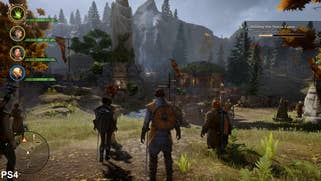

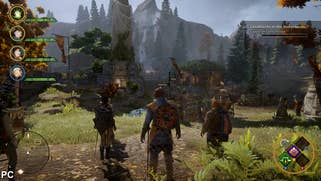


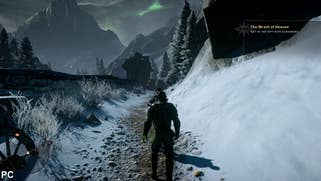
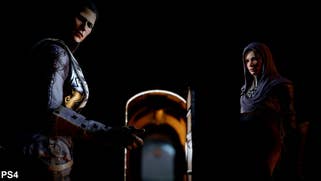
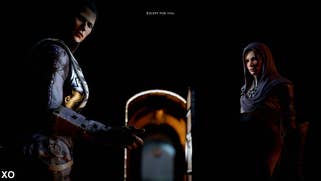
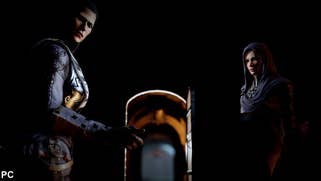
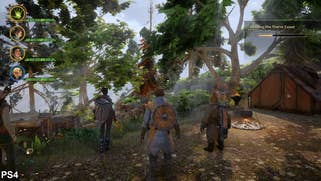


BioWare has taken an interesting approach to foliage rendering on consoles. Rather than simply lining up with one of the PC presets, instead we see completely different texture groupings. Fields of grass are arranged differently on console compared to PC regardless of the selected quality level. On PC these arrangements remain the same across all settings with only the radius in which the foliage is drawn impacted.
Shadow quality isn't bad on console but it's clear that on the PC, you can enjoy much cleaner shadows that extend further into the environment. The resolution of shadows on console, then, seems to be consistent with the PC version's medium setting. As noted above, the console versions do use HBAO as the ambient occlusion technology of choice, but on PC, HBAO Full is available, which primarily produces cleaner shading around foliage.
In addition, the PC version offers quite a few additional customisation options that allow users to push the visual quality up still further. We tested on a moderately powerful i5 3570k set-up, paired with an Nvidia GTX 780 and were able to achieve a mostly stable 60fps at 1080p using high settings across the board (while increasing post-processing to ultra for improved cut-scene quality). More powerful hardware should have little trouble holding 60fps, of course, but in our case we noted a tremendous difference in performance between ultra and high. The extra detail offered in ultra, while nice, just isn't worth the hit.
Of course it's possible to cap your frame-rate at 30fps and push for the highest details while utilising a bit of downsampling for even better anti-aliasing. However, we definitely recommend sticking with high on most settings, lowering elements such as shadows, water and tessellation quality to achieve a smoother frame-rate without losing too much detail. We highly recommend leaving mesh quality at high, which improves hair rendering significantly, and post-process quality at ultra in order to side-step depth of field artifacts.
Performance-wise, both consoles do a good job of delivering a stable, consistent frame-rate but it is the Xbox One version that delivers the smoothest experience overall. Frame-rate drops are extremely rare, only appearing in the most extreme circumstances - for all intents and purposes we're looking at a locked 30fps. Unfortunately, the higher resolution on PS4 comes with a catch in the form of noticeable performance dips during strenuous sequences. During a normal run of play, the game does a good job of maintaining the target frame-rate but frame-rate faltered sometimes during battle sequences and sometimes even traversal across the landscape. Both versions use an adaptive v-sync setup that results in torn frames when the 30fps performance target isn't met, but thankfully, torn frames are contained mostly within the top 25 per cent of the screen, with less of a serious impact on image quality than you might expect.
The real issue, however, lies with the cut-scene performance and this is something that impacts all versions of the game. During playback, animation often stutters an hitches, leading to some undesirable results. The results seem like typical frame-rate dips but, in reality, that's not the case at all. In fact, outside of some of the more demanding sequences, cut-scenes actually deliver a very stable 30fps. If you look beyond the character animation you can see incidental background details, such as falling snowflakes, continue to update at a smooth 30fps even while the foreground actors exhibit unfortunate stutter. The same issue exists on PC as well and appears even more distracting - cut-scenes are capped at 30fps, which in turn results in additional frame-pacing issues that exacerbate the problem. The PC version also reveals the inclusion of additional 30fps animations such as swinging doors and certain incidental NPCs that appear out of place while the rest of the game runs at 60fps.
There is a partial solution available, however, in the form of a command line parameter (-GameTime.MaxSimFps 60 -GameTime.ForceSimRate 60+). Unfortunately this doesn't work across the board and, instead, reveals some interesting design choices. Many of the game's key cut-scenes have a set rate at which the animation plays back regardless of this setting. That means that background elements, such as the aforementioned snowflakes, update at 60fps while foreground animations sometimes continue to stutter. Even if you're holding a steady 60fps, the end results may still appear choppy. Thankfully this doesn't apply to all scenes as many of the normal dialog sequences actually do run at the full 60fps with this command line enabled. Unfortunately, this command line option prevents multiplayer from functioning and introduces bugs in single-player that can impede progress.
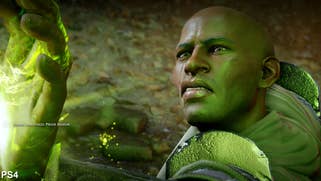
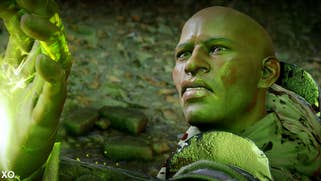

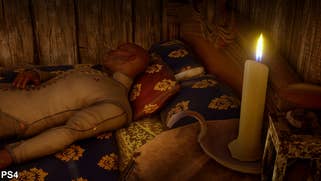

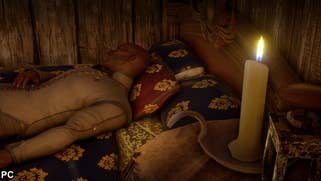



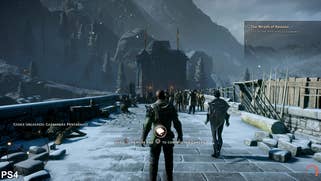

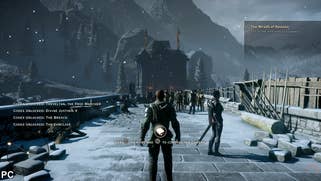
PC performance is generally quite good and extremely scalable. A meagre 1GB Radeon HD 7770, for instance, is able to deliver a fairly smooth experience at lower settings while a GTX 780 was able to produce excellent performance at the high preset. We didn't have a chance to test Mantle, unfortunately, but performance in DX11 is excellent as is. We also didn't run into any issues suggesting that the game's DRM scheme degrades performance. The only real issues we encountered centre on cut-scene hitching.
In the last generation BioWare opted to build Mass Effect around Unreal Engine 3 while the Dragon Age series utilised an in-house renderer. Results weren't always as polished as one might have hoped, particularly with Dragon Age, where mediocre visuals were coupled with poor frame-rates on consoles leading to an often sub-par experience. Starting with Dragon Age: Inquisition, BioWare has made the move to DICE's Frostbite engine, and the results are impressive. Dragon Age also marks the second Frostbite 3 title on the new consoles to target 30fps - the first being Need for Speed Rivals - and it definitely demonstrates the capabilities of this engine when tackling a new genre. Frostbite 3 was never a great fit for last generation consoles but it's clear now that it's perfect for EA's key titles going forward.
Dragon Age: Inquisition - the Digital Foundry verdict
The future of BioWare games is looking bright indeed. Dragon Age fans should be pleased by the combination of Inquisition's excellent visuals and stable performance, while its gameplay is receiving plenty of plaudits. From a technical perspective, even with the underwhelming cut-scene performance, Dragon Age: Inquisition is still the most optimised BioWare experience we've enjoyed on a console. Thankfully the firm has acknowledged these issues (which are mostly a concern for PC owners) and is apparently investigating solutions. Considering that much of the problem appears to be tied to animation rather than frame-rate, however, we're very curious to see what they come up with.
In terms of final recommendations, it's clear that if you have the muscle, the PC version is going to provide the best experience - but the console versions are still very impressive. If you don't mind minor frame-rate dips and feel that image quality is most important, it's easy to recommend the PS4 version. However, those looking for the most stable experience should instead opt for the Xbox One version. It's clear that neither console version is quite perfect but the level of graphical accomplishment and performance are an enormous improvement over every other BioWare console title we've played.
